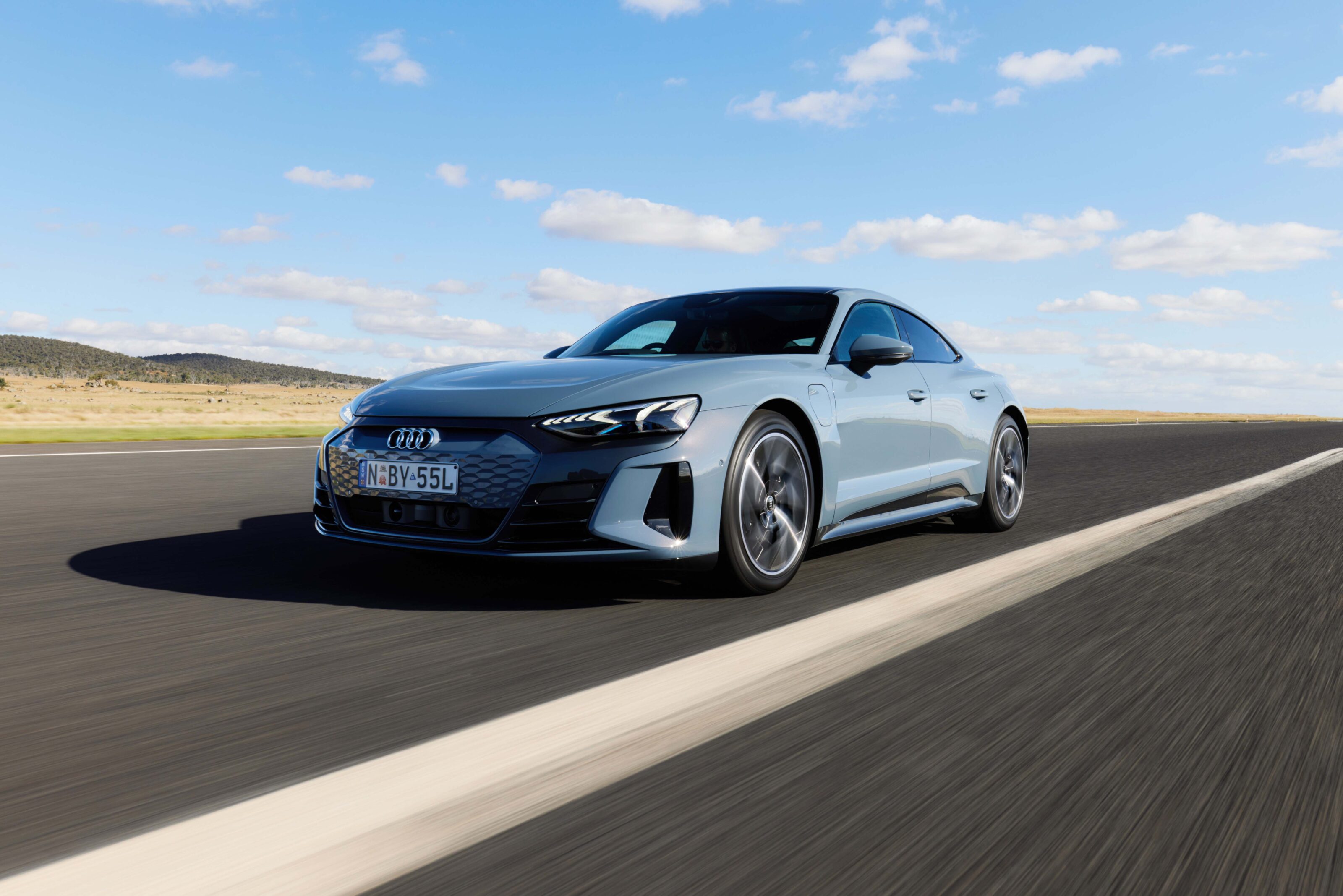Score breakdown
Things we like
- Handsome design + potent performance
- Superb ride comfort
- Greater GT focus than closely related Porsche Taycan
- Free servicing, charging and roadside assist for six years
Not so much
- Annoying drive mode select button
- Hardcore RS variant misses the ‘GT’ brief a little
- Rear visibility not great; limited cabin storage
- No rear-drive or wagon variant planned. Boo.
Chances are you’ve already made a few assumptions about the Audi E-Tron GT. This is the sister car to the Porsche Taycan and it shares the same bespoke J1 platform, the same 800-volt architecture (which allows for ultra-fast charging), and uses the same battery and e-motor tech.
It’s tempting, then, to think of Audi’s new electric flagship as simply a Taycan draped in a fresh, and rather fetching, Hugo Boss suit. Quite the looker, isn’t it?
But for all their similarities, there are some key differences. The first is that unlike the Porsche, which has a wider spread of variants and bodystyles, the Audi is only available here in two variants: a base E-Tron GT or a more powerful and more richly equipped RS E-Tron GT flagship.
The second difference is more significant.
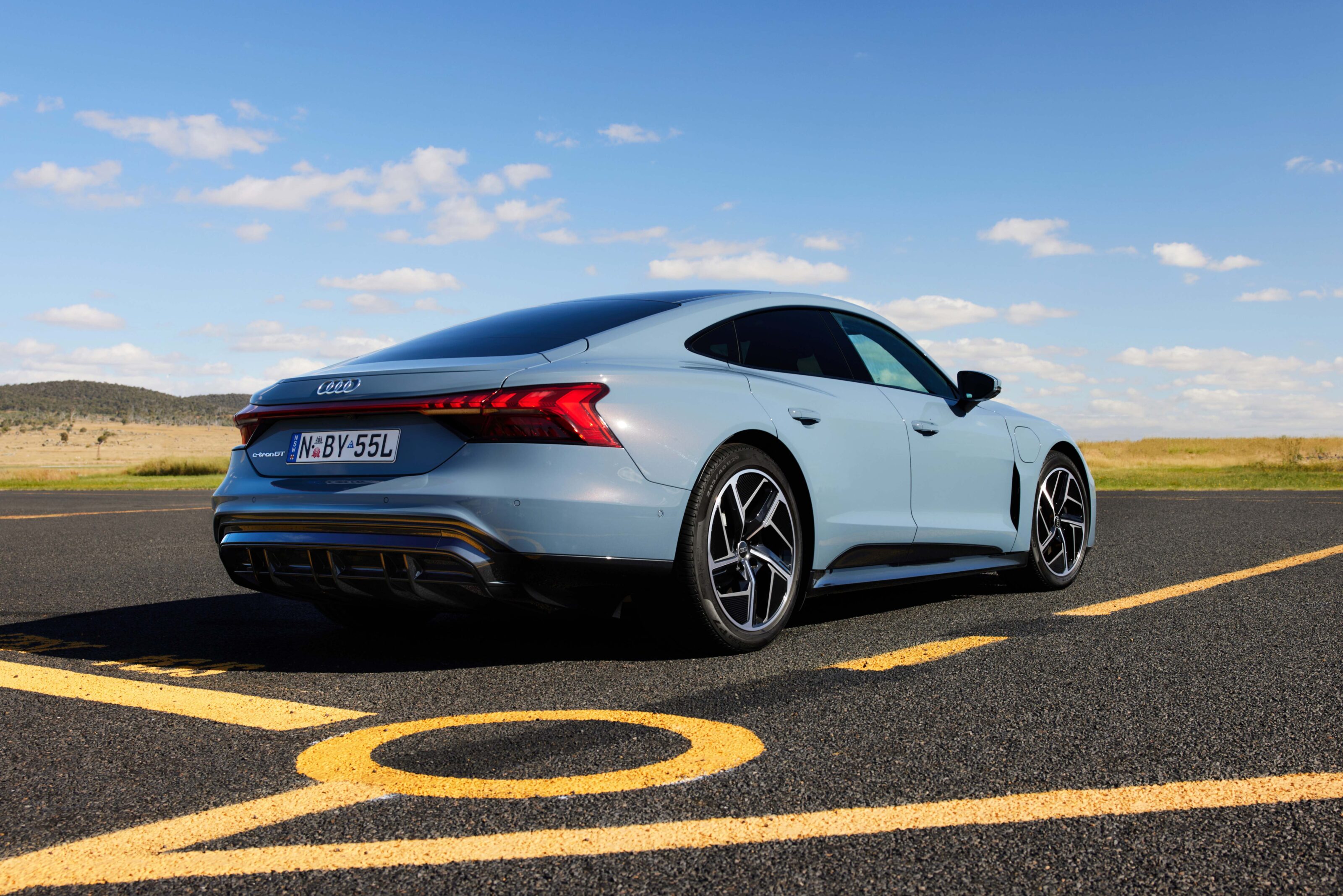
Where the Porsche has a strong focus on performance and dynamics, Audi’s engineers have deliberately made their car more of a grand tourer.
Ride comfort and silky handling were top priorities and this hasn’t only given the E-Tron GT a personality all of its own, it’s arguably made Audi’s take on the silent super sedan the smarter pick. Yeah, we weren’t expecting that one either…
Audi calls the E-Tron GT its new ‘brand shaper’ (a role previously held by the R8 supercar), meaning it gives us a glimpse at where Ingolstadt sees itself heading. And now, after a multitude of delays, it has finally arrived in Australia. We drove it on some of Australia’s best roads in the New South Wales high country to see if it can live up to the hype.
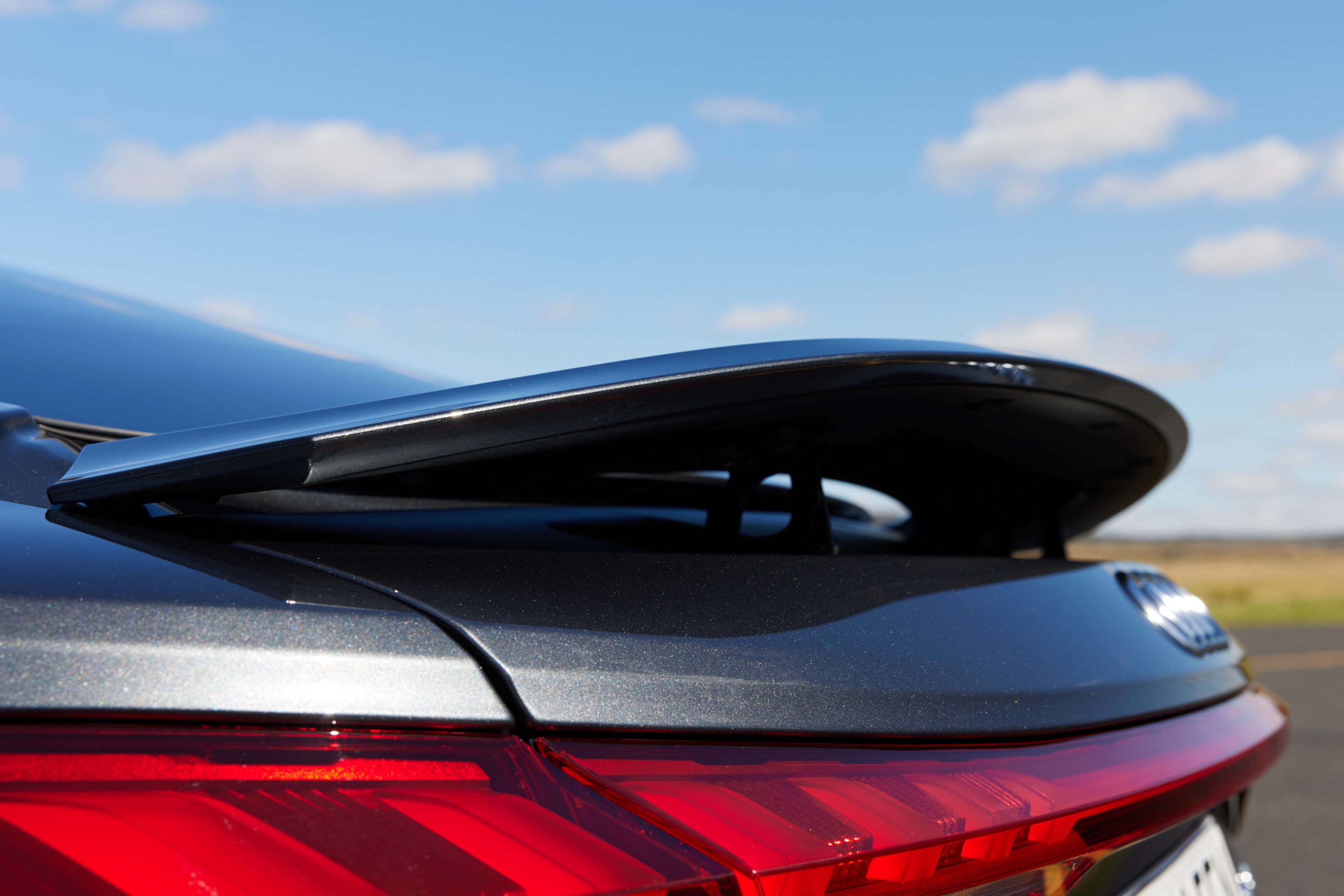
JUMP AHEAD
- How much is it, and what do you get?
- How do rivals compare on value?
- Interior comfort, space and storage
- What is it like to drive?
- How much energy does it use?
- How fast can it charge?
- How safe is it?
- Warranty and running costs
- VERDICT
- Specifications
How much is it and what do you get?
There are two versions of the Audi E-Tron GT available in Australia.
The range kicks off with the ‘entry-level’ E-Tron GT which starts at $180,200 before on-road costs and has a claimed NEDC range of 540km.
Its twin electric motors produce a healthy 350kW/630Nm but if you engage a ‘boost mode’ function, those outputs jump to 390kW/640Nm for short 2.5-second bursts. In boost mode, the E-Tron GT can hit 0-100km/h in 4.1 seconds.
The flagship RS variant ups the ante considerably. Priced at $248,000 before on-road costs, it produces 440kW/830Nm in regular driving or 475kW/830Nm with boost mode engaged. That makes it the most powerful production Audi ever.
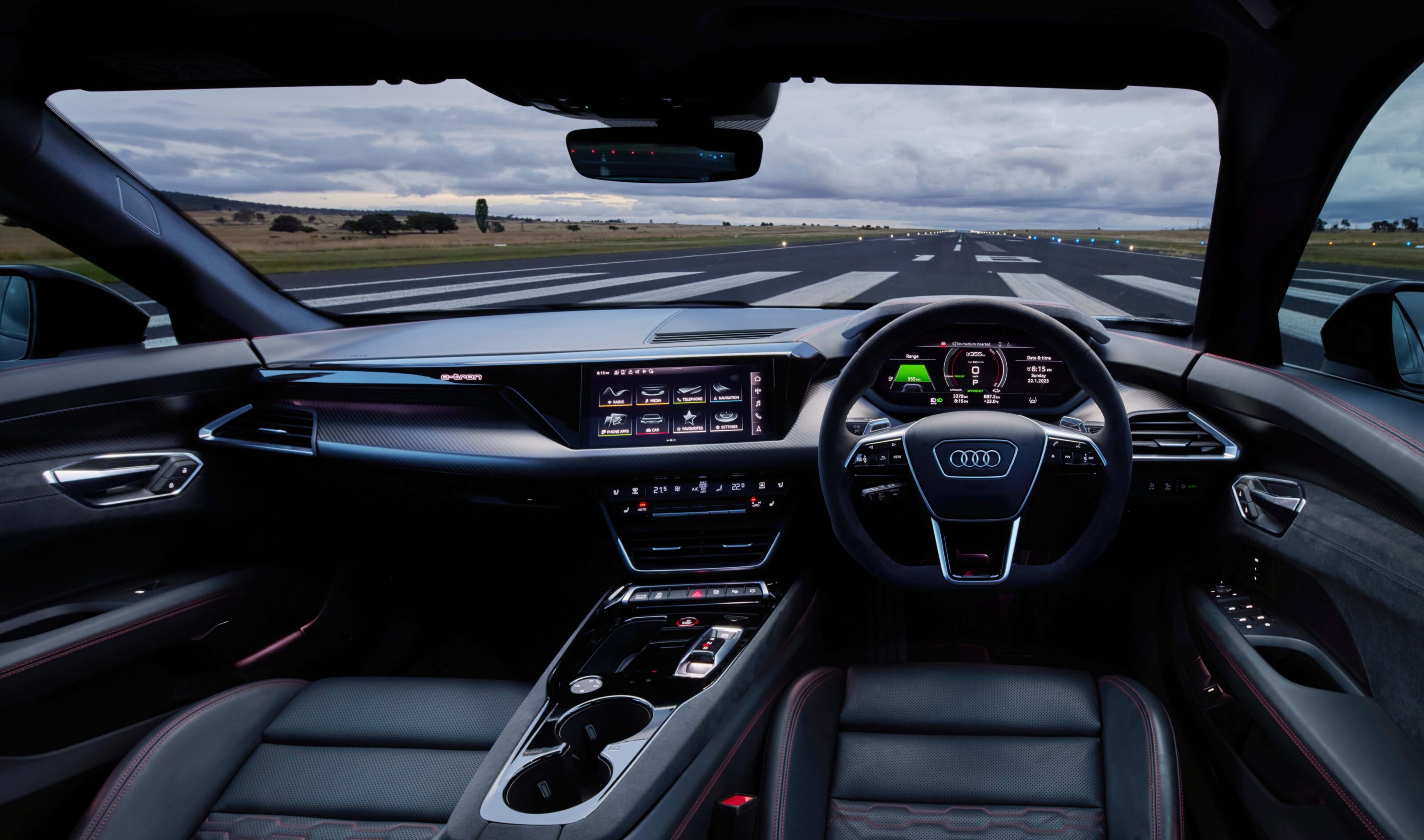
The basics
| Audi E-Tron GT | Audi RS E-Tron GT | |
|---|---|---|
| Power | 350kW (390kW in boost mode) | 440kW (475kW in boost mode) |
| Torque | 630Nm (640Nm in boost mode) | 830Nm |
| Transmission | 2-speed automatic | 2-speed automatic |
| Body | 5-door, 5-seat large sedan | 5-door, 5-seat large sedan |
| Driving range | 540km (NEDC) | 504km (NEDC) |
| Boot space | 405L boot + 81L frunk | 350L boot + 81L frunk |
| Price | $180,200 + on-road costs | $248,200 + on-road costs |
It can rocket from 0-100km/h in a supercar-baiting 3.3 seconds and is armed with a host of additional chassis hardware like all-wheel steering, which can turn the rear wheels to a maximum of 2.8 degrees, tungsten-carbide brake discs, larger 21-inch alloys and an E-Quattro sport differential.
A downside to the RS version’s extra performance is a drop in range, with its NEDC claim rated at 504km. Still, despite its extra expense and shorter range, Audi expects the RS to make up the majority of E-Tron GT sales in Australia.
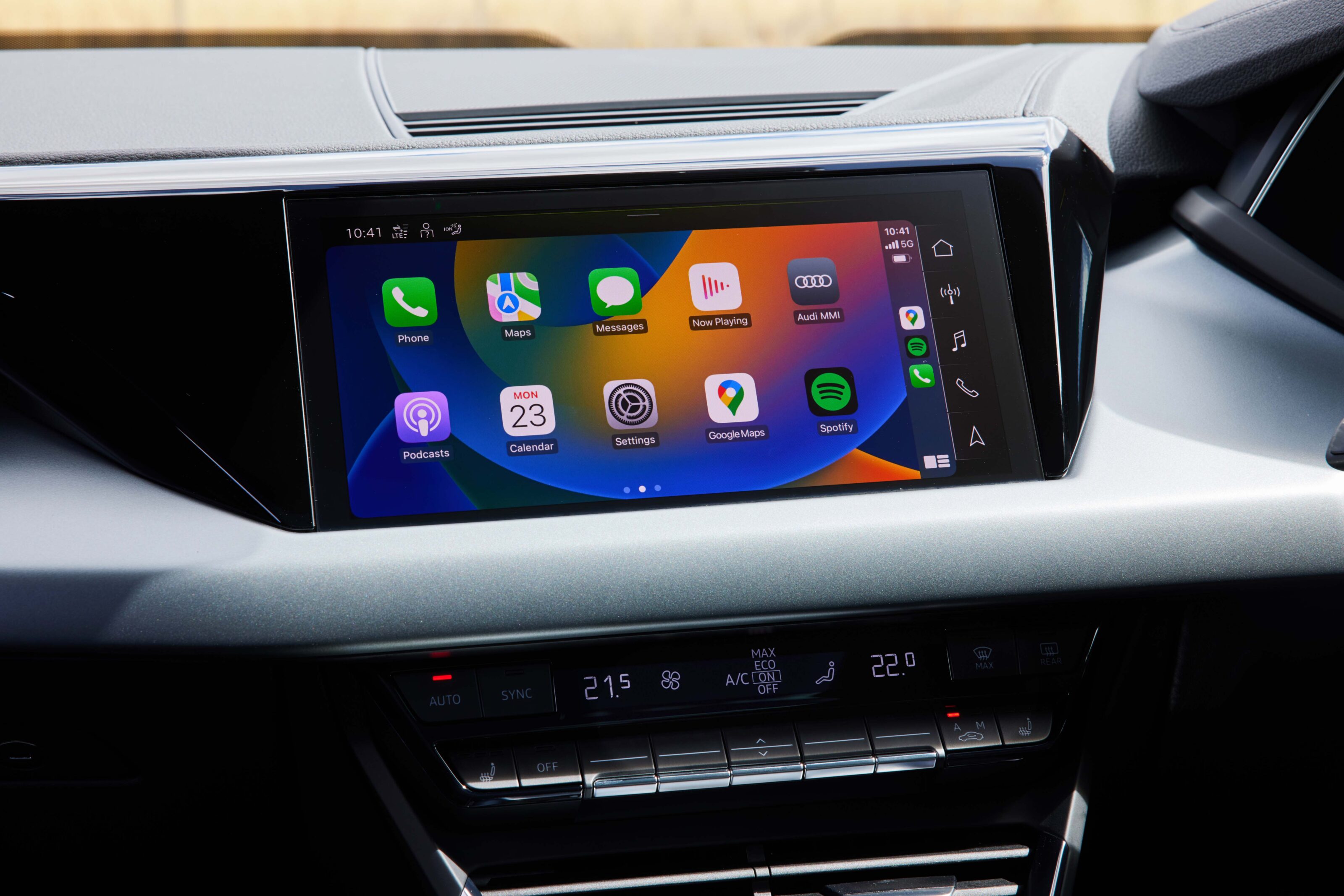
Both versions of the E-Tron GT are all-wheel drive and powered by the same 93kWh battery pack (that’s gross; usable capacity is 84kWh). They also both feature a two-speed gearbox on the rear axle, have five seats and hit the scales at around 2300kg. Three-chamber air suspension that can adjust the ride height depending on your drive mode is also standard across the range in Australia.
As you’d expect given the E-Tron GT’s flagship positioning, the level of standard equipment across both models is impressive and includes:
| 023 Audi E-Tron GT standard features | |
|---|---|
| 10.1-inch infotainment screen | Matrix LED headlights |
| 16-speaker Bang & Olufsen audio | Panoramic sunroof |
| DAB+ digital radio | Satellite navigation |
| Head-up display | Tri-zone climate control |
| Heated leather sports seats | Wireless Apple CarPlay & Android Auto |
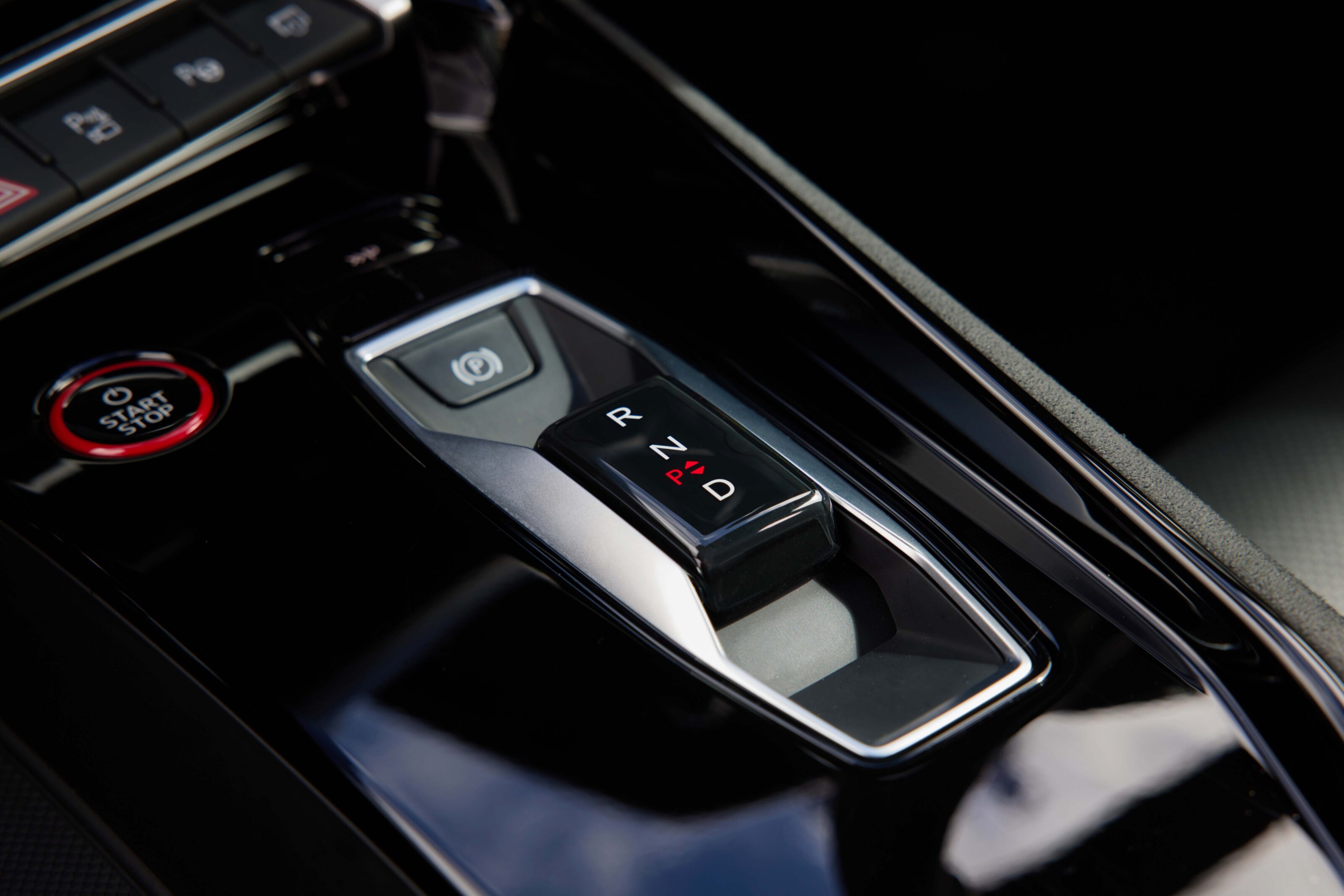
Stepping up to the RS adds an even richer list of standard equipment, headlined by:
| 2023 Audi RS E-Tron GT features | |
|---|---|
| Black exterior styling package | Nappa leather upholstery |
| Carbon-fibre inlays | Privacy glass |
| Heated sports steering wheel | RS E-Tron sport sound |
| Heated/cooled RS sports seats | Stainless steel pedals |
The battery tech that powers both versions of the E-Tron GT is quite clever.
The pack itself is made up of 33 cells, so should one fail they can each be replaced individually.
Audi’s engineers have even altered the battery’s design to improve rear passenger room. Two sections of the battery pack have no cells to provide a dip in the floor and increase rear foot room.
Because the E-Tron GT is built around an 800-volt architecture it can accept ultra-fast DC charging up to 270kW, meaning that if you can find a charger fast enough (and one that’s in working order), you can top up the battery from 5-80 per cent in 22.5 minutes.
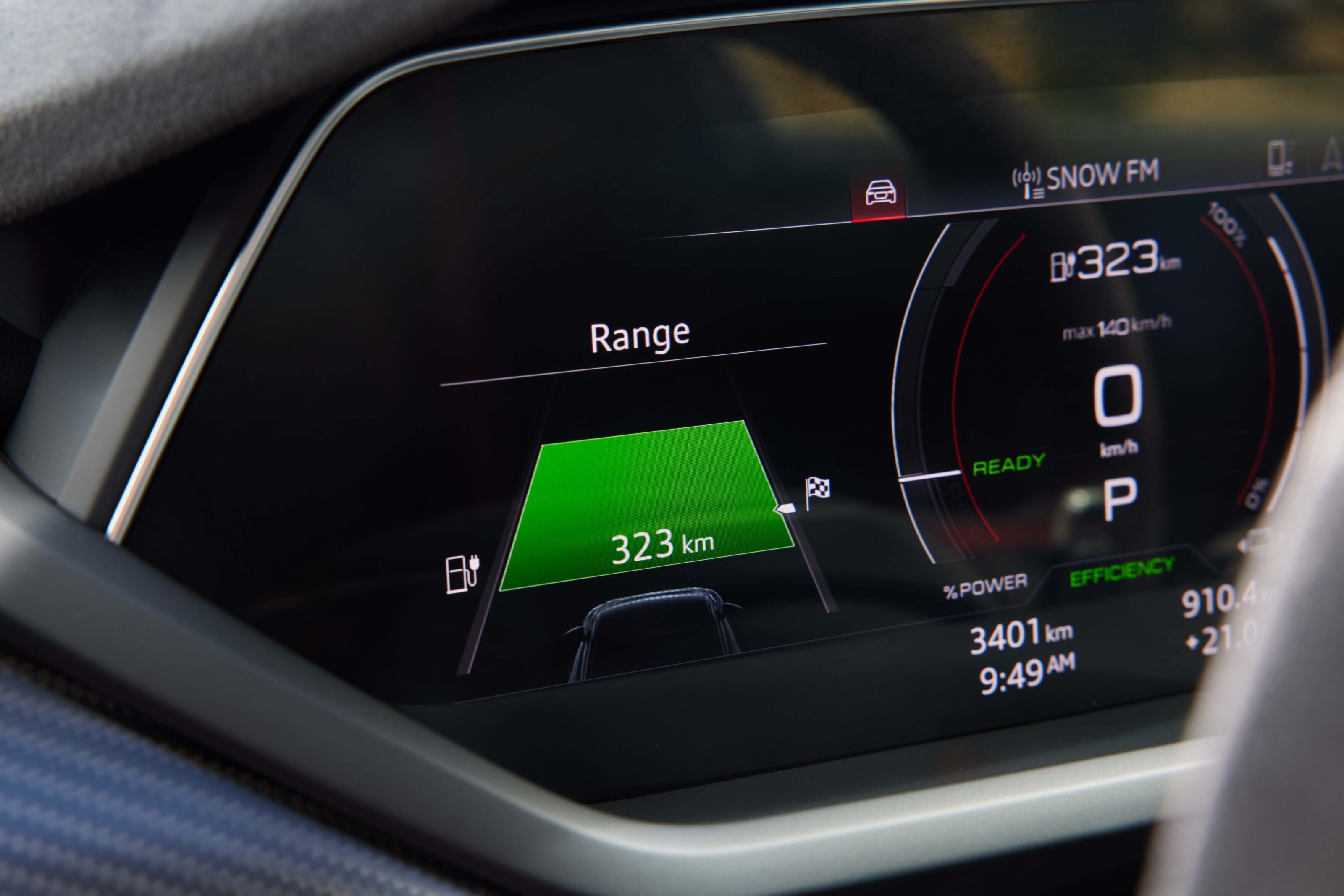
Size-wise, the E-Tron GT has a similar form factor to an RS7 but it’s a smidge shorter and a touch wider. Further enhancing that sense of width are the flared wheel arches which Audi says are the most pronounced of any production model it has ever made.
A final point to consider when it comes to value is that Audi has worked hard to deliver what it calls “the best EV ownership scheme in the industry”. Every E-Tron GT comes with six years of free servicing, six years of free charging via the Chargefox network and six years of complimentary roadside assistance.
Installation of a 7.2kWh wallbox charger in your home is also complementary and if customers prefer a 22kW charger on three-phase power, they’re simply required to pay the difference rather the shelling out for the more powerful charger.
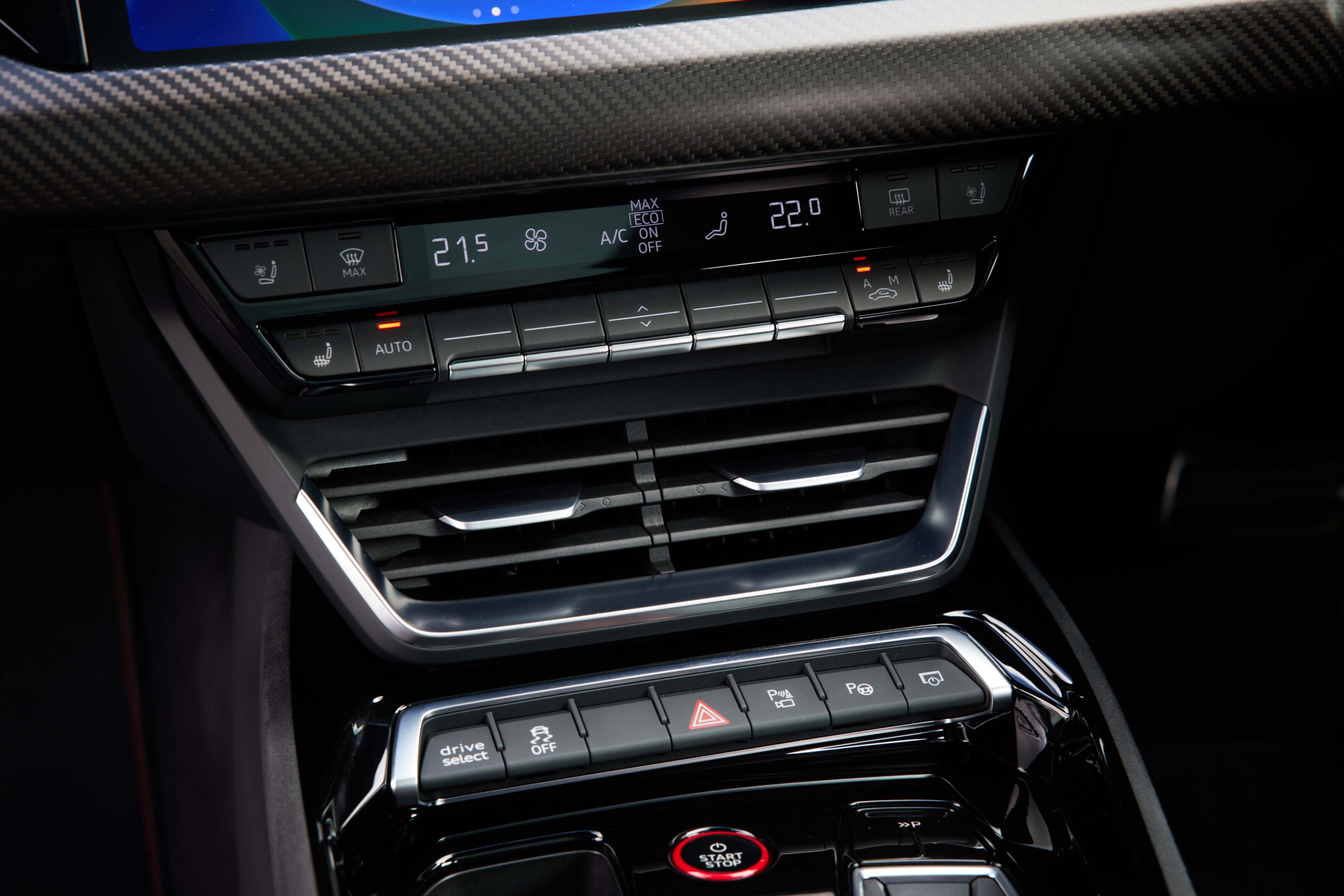
How do rivals compare on value?
Line the E-Tron GT up against a Porsche Taycan and it compares favourably.
While the Porsche does offer a less expensive, rear-drive model, to get an equivalently powerful and all-wheel drive version of the Taycan you’ll need to spend around $20,000 more over a ‘base’ E-Tron GT.
That will score you a Taycan 4S, but the Porsche also comes with a smaller 79kWh battery as standard, meaning you’ll need to fork out an additional $11,590 to secure the same 93kWh battery and range as the Audi.
A Taycan 4S has a slightly smaller boot, too, and it only carries a three-year warranty compared to the Audi’s five-year coverage period.

Another logical rival is the Tesla Model S Plaid, given it offers more range and even more performance for similar money but the Model S hasn’t been available for purchase in Australia since December 2021.
The Kia EV6 GT is an interesting, left-field alternative. While it can’t compete with the Audi for interior presentation, exterior design execution or outright handling, Kia’s performance-focused flagship EV6 is considerably more powerful than a base E-Tron GT thanks to outputs of 430kW/740Nm and it can hit 0-100km/h in 3.5 seconds.
Kia’s new flagship also offers ultra-fast charging thanks to its 800-volt architecture, has a roomier cabin, boasts a seven-year warranty and undercuts the cheapest E-Tron by a hefty $80,000.
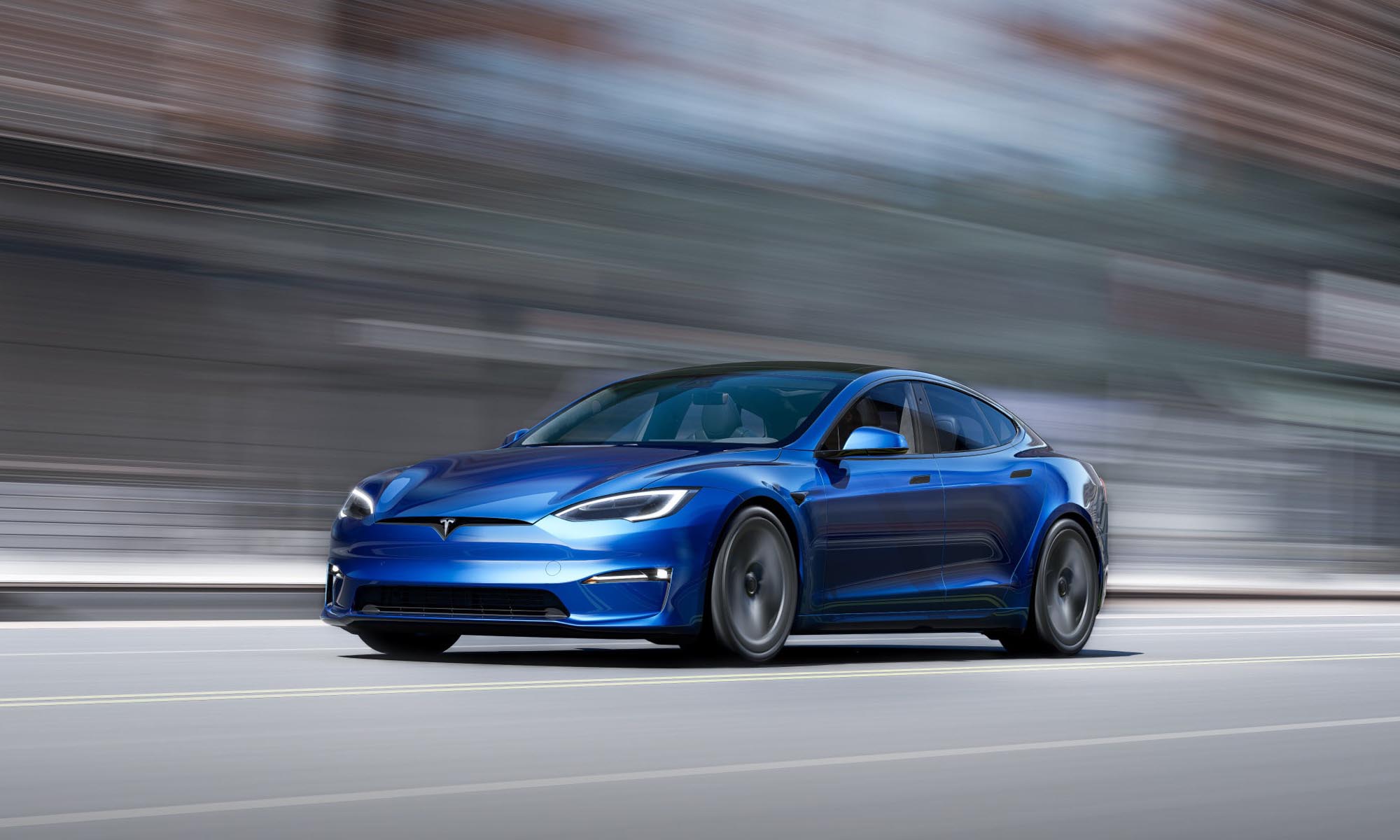
Interior comfort, space and storage
Audi makes some of the world’s best car interiors and the E-Tron GT is no exception.
Slip inside and you’re greeted by a low driving position and a high-end cabin that feels remarkably familiar in its layout and execution. That’s quite deliberate.
Unlike some rivals that strive to impress with glitzy and bravely designed cabins that require a steep learning curve to operate, Audi wanted the interior of the E-Tron GT to be user-friendly. The result is a cabin that feels modern and cutting-edge but supplements its large digital displays with actual physical buttons (hooray!).
The mix of materials in both versions is high quality, the front seats are supportive and comfortable and all of the cabin tech is remarkably simple to use and navigate. Even better is that Audi has done away with the Taycan’s haptic touch controls on the centre console and instead fitted a strip of conventional buttons to adjust the air-con temperature and fan speed.
Call that a rare triumph of form following function.
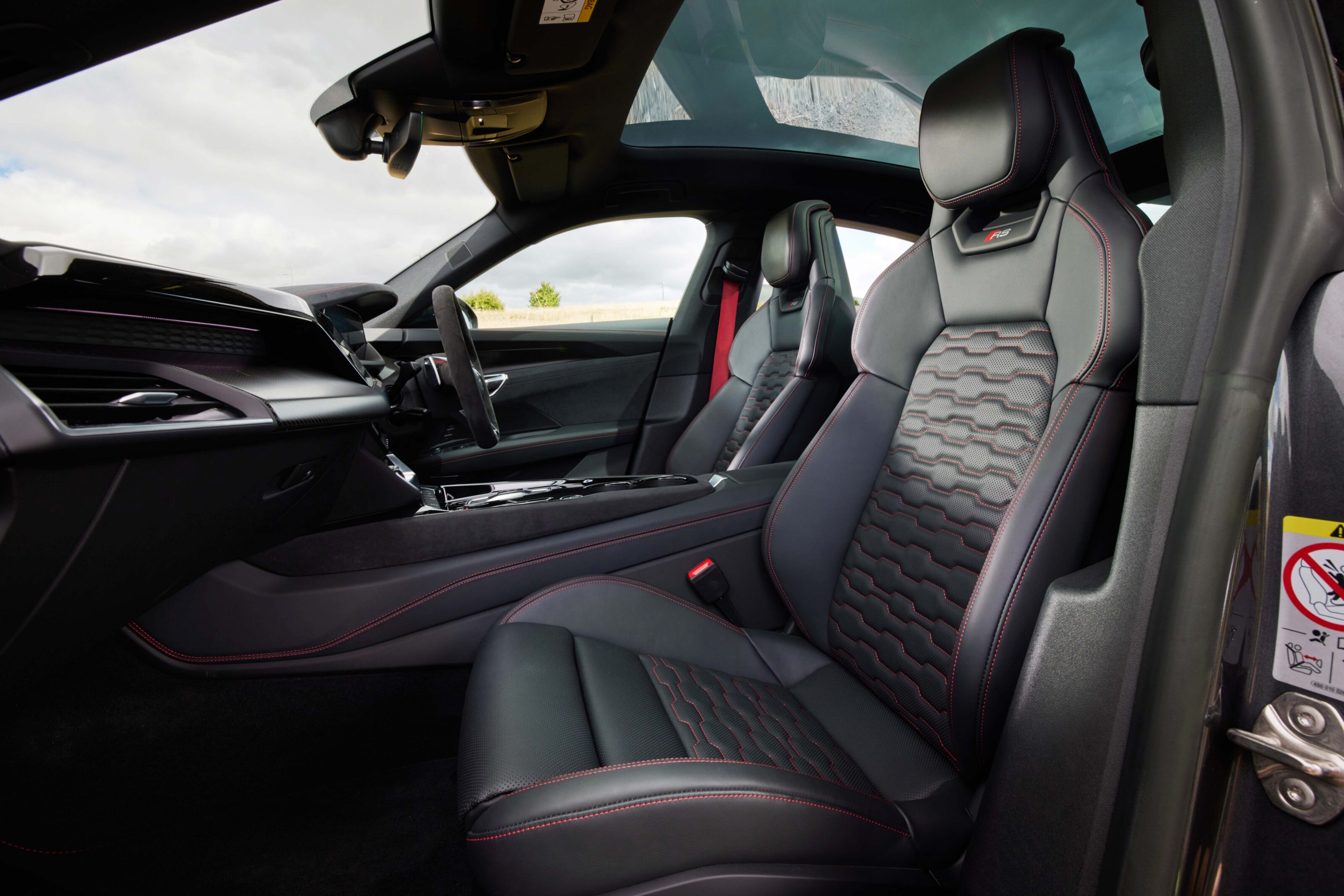
There are a few interior niggles, however. For such a big car, cabin space and storage are adequate rather than generous. Up front, you score a pair of central cupholders, some average-sized door pockets and a little slot next to the stubby gear selector but that’s about it for space to put things.
It’s equally light-on in the back. While the outboard seats are relatively roomy for adults thanks to ample knee- and toe-room (you can thank the cutouts in the battery pack for that one), taller passengers could struggle for headroom.
And although Audi does officially classify the E-Tron GT as a five-seater, the middle rear seat is so narrow and high-set that it’s really more of a 4+1. Rear visibility is also pretty limited due to that sleek rear window, although the 360-degree camera is good enough that it’s not really an issue.
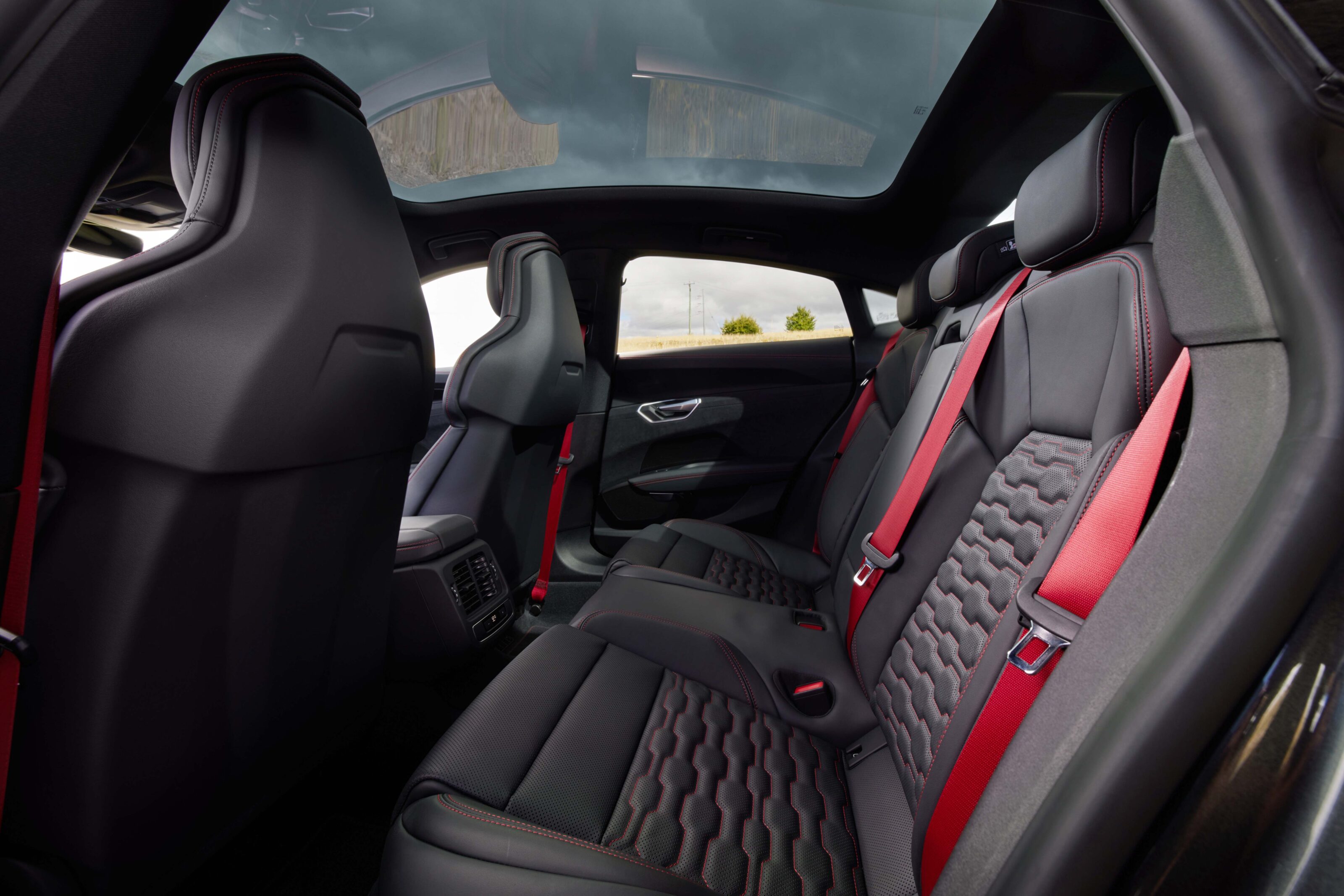
The amount of boot space you get depends on which version of the E-Tron GT you go for. The base car offers 405L of luggage capacity in the boot and another 81L in the nose.
The boot itself is on the narrow side but it’s flat and relatively deep and the rear seats do fold flat if you need more room. The flagship RS has a smaller 350L boot on account of needing to fit a larger electric motor on the rear axle.
Hankering for an Avant version? Us too but we have bad news on that front. Despite Audi’s reputation as a builder of some of the world’s best fast wagons, and the fact that Porsche builds a wagon-like Cross Turismo version of the Taycan, there are no plans for a long-roof version of the E-Tron GT. Boo.
Oh, and if you plan on using your Audi E-Tron GT as a proper grand tourer (and you should, as we’ll explain in the next section of this review) one thing to be mindful of is the lack of spare tyre.
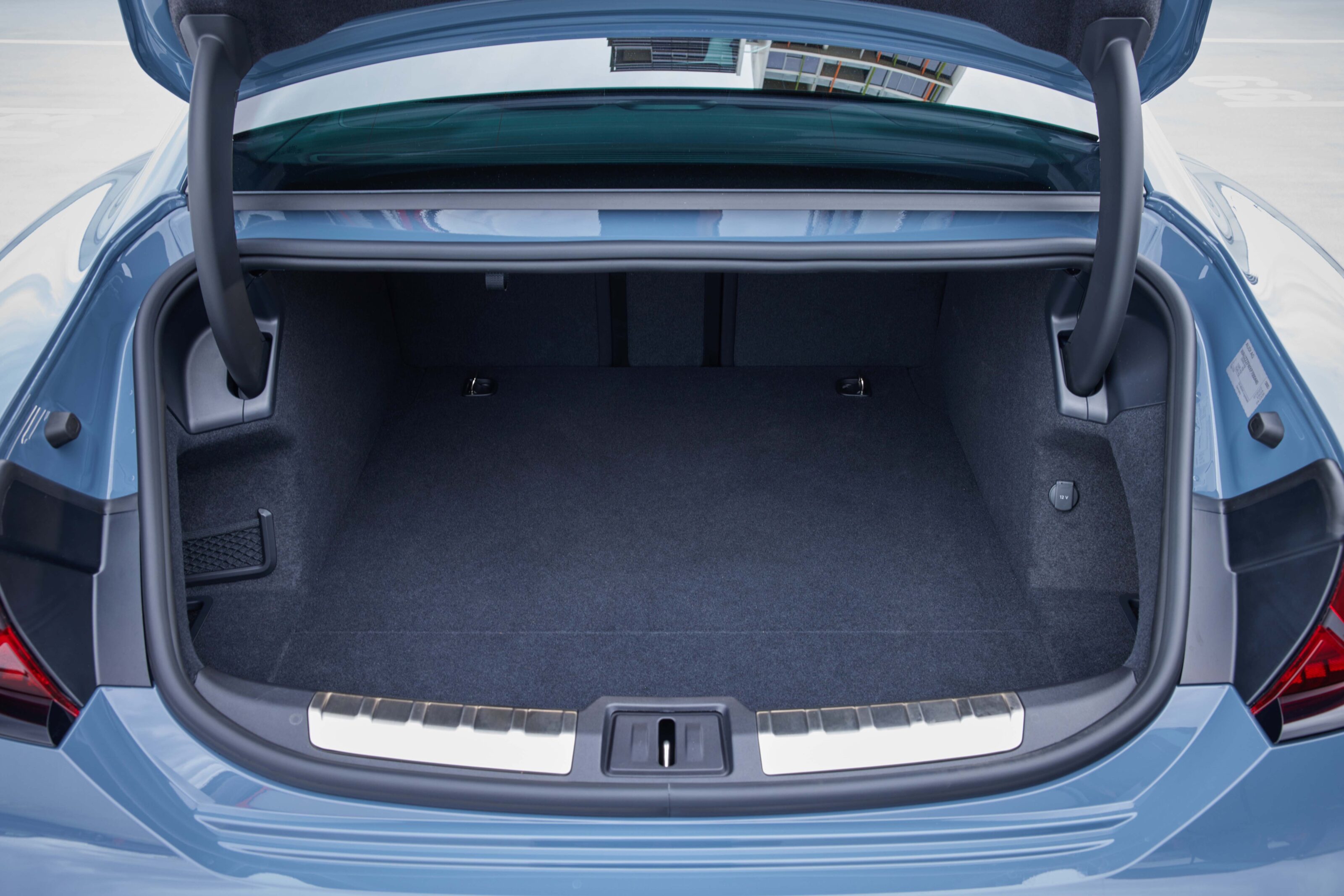
What’s it like to drive?
Let’s pull the band-aid off immediately, shall we? This is no hardcore apex hunter that rewrites the laws of physics and is dripping with driver feedback.
If you’re chasing back-road thrills, a Porsche Taycan is a better bet. But what the Audi gives up in ultimate performance, it more than makes up for with ride comfort and control.
Audi’s engineers have softened off the E-Tron GT’s three-chamber air suspension by as much as 4PSI compared to the equivalent set-up in a Taycan and the benefits of this more relaxed focus are obvious. Sure there’s a sniff more body roll than you get in a Taycan but on sweeping open backroads, the E-Tron GT is a deeply impressive and surprisingly compliant super sedan.
The cabin is nicely refined, the steering is naturally weighted and accurate, and the ride comfort, even on the RS’s large 21-inch wheels which are wrapped in enormous Goodyear Eagle F1 rubber measuring 265/35 R21 up front and 305/30 R21 out back, is deeply impressive.
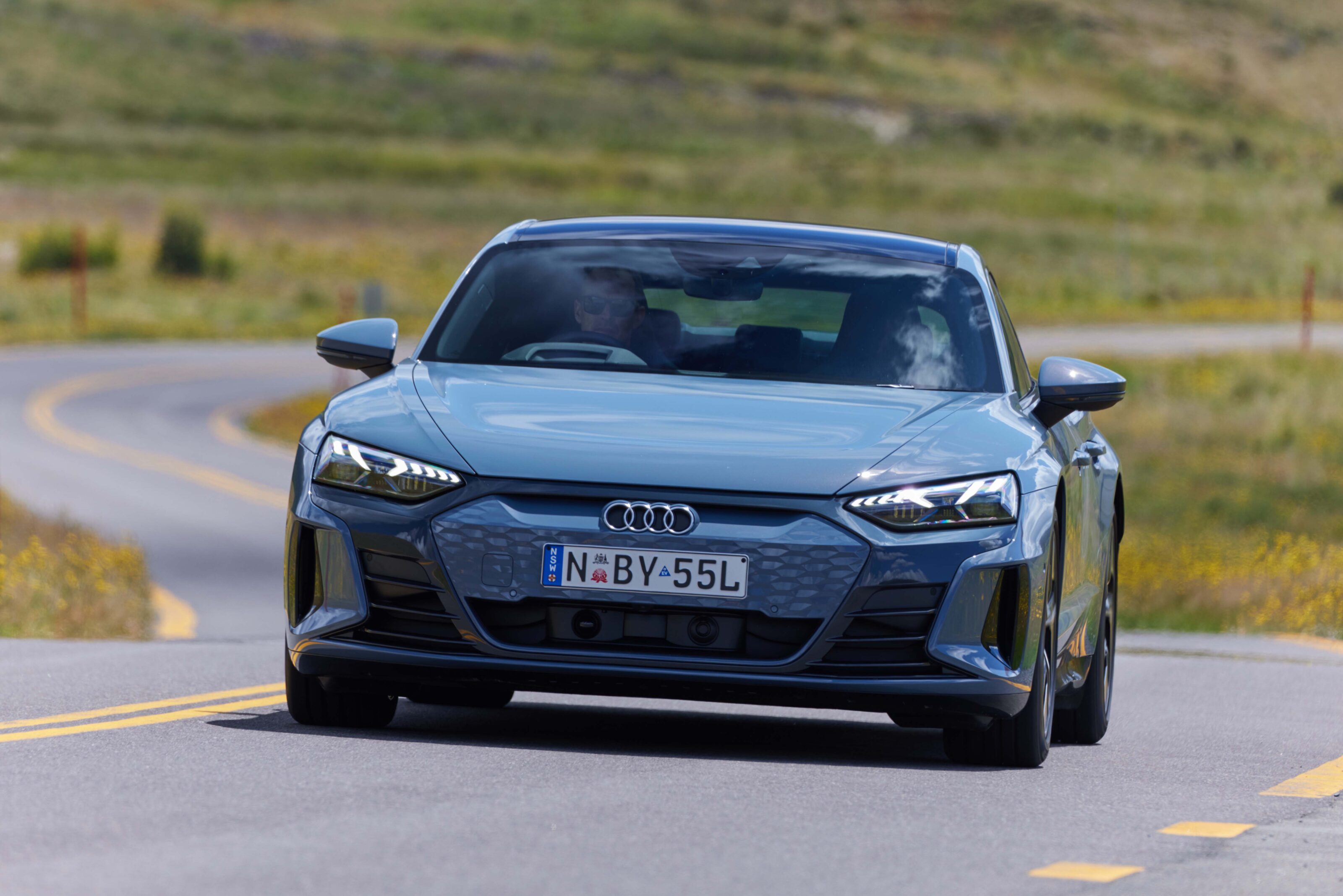
And if it’s speed you want, both versions deliver in spades.
Rollercoaster acceleration has fast become an EV party trick and in terms of pure pace, the E-Tron GT can mix it with the best of them. Against our clock, the RS E-Tron GT actually beat Audi’s 0-100km/h claim and rocketed from a standstill to three figures in 3.2sec.
The ‘regular’ car wasn’t far behind either, completing the same marker in 4.0sec dead. Is a Taycan Turbo S or Tesla Model S Plaid quicker? They might be on paper but in the real world, the E-Tron GT feels every bit as fast as you’d ever want to go.
As for outright grip and agility, it’s clear that the harder and more powerful RS version has the edge over the ‘regular’ E-Tron GT. That’s largely down to the benefits of the RS’s standard four-wheel steering and e-diff, which combine to make it feel far keener and lighter than a 2300kg sedan ought to but, weirdly, it was actually the standard car that impressed us the most.

It might be a sniff slower but its smaller 20-inch wheels (rubber is Pirelli Cinturato P7 measuring 245/45 R20 and 285/40 R20 F/R) deliver ever greater compliance and on fast, flowing roads its more conventional chassis tune is easier to key into.
To our minds, it felt like a better match for the E-Tron GT’s ‘grand tourer’ focus and when you factor in the fact you also save $68,000 while getting more battery range, it seems the smarter pick.
So what about complaints?
Dynamically, they’re few and far between.
Tyre roar can intrude on coarse-chip surfaces, the two-speed gearbox does occasionally deliver a jerky shift and at low speed, it’s possible to detect some suspension noise and cabin boominess.

But our biggest quibble goes to the location of the Drive Select button. The E-Tron GT has three drive modes to choose from – Eco, Comfort and Dynamic – but actually cycling through them is a bit of a faff because the button is tucked away on the far side of the centre stack, near the air-con controls.
It’s finicky to reach and can force you to take your eyes off the road, which had us yearning for a drive mode dial on the steering wheel, as you get in Mercedes-AMG or, incidentally, a Porsche Taycan.
If that sounds like we’re scratching for things to complain about it’s because we are. It’s a mighty impressive thing, the Audi E-Tron GT.

How safe is it?
Officially, the short answer is we don’t know.
Safety watchdogs are yet to crash test the E-Tron GT, so it has no official ANCAP or Euro NCAP crash rating. That doesn’t mean it’s an unsafe car, however.
The closely related Porsche Taycan does carry a five-star crash rating and Audi has fitted the E-Tron GT with a long list of standard safety equipment. That includes autonomous emergency braking with pedestrian detection, adaptive cruise control, a 360-degree surround view monitor, blind-spot monitoring, intersection cross assist, rear-cross traffic alert, lane-keep assist and tyre pressure monitoring.
Further assistance systems include an exit warning system that can alert occupants of approaching pedestrians and cyclists as you open the door and turn assist, which monitors approaching traffic to prevent a collision as you turn right through intersections.
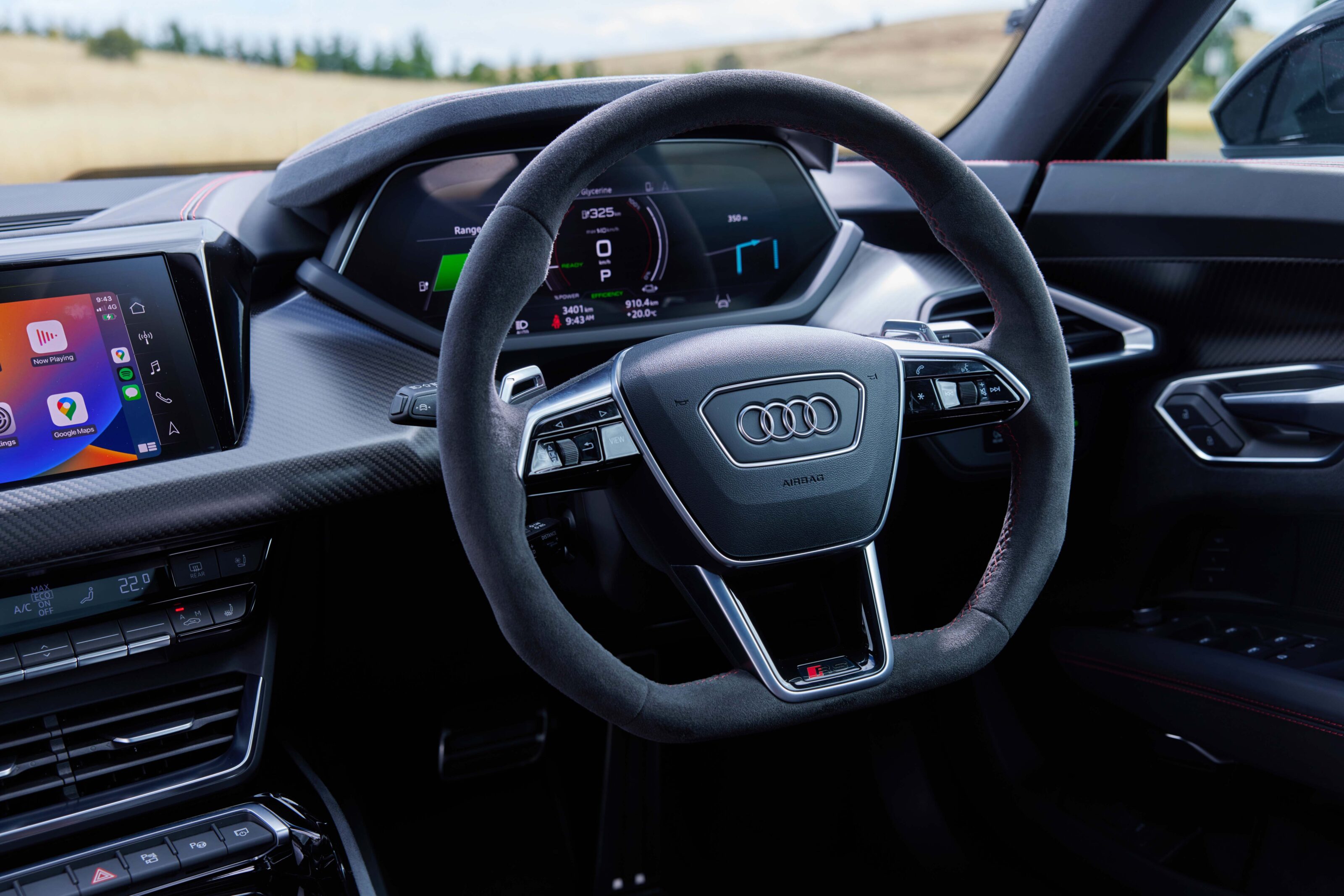
Warranty and running costs
Like all new Audis, the E-Tron GT is covered by a five-year, unlimited-kilometre warranty.
The battery pack is covered for eight years or 160,000km.
Service intervals are every two years or 30,000km but the first three visits to the dealer are free under Audi’s ‘666’ package which also includes six years’ roadside assistance and six years’ free public charging via the Chargefox network.
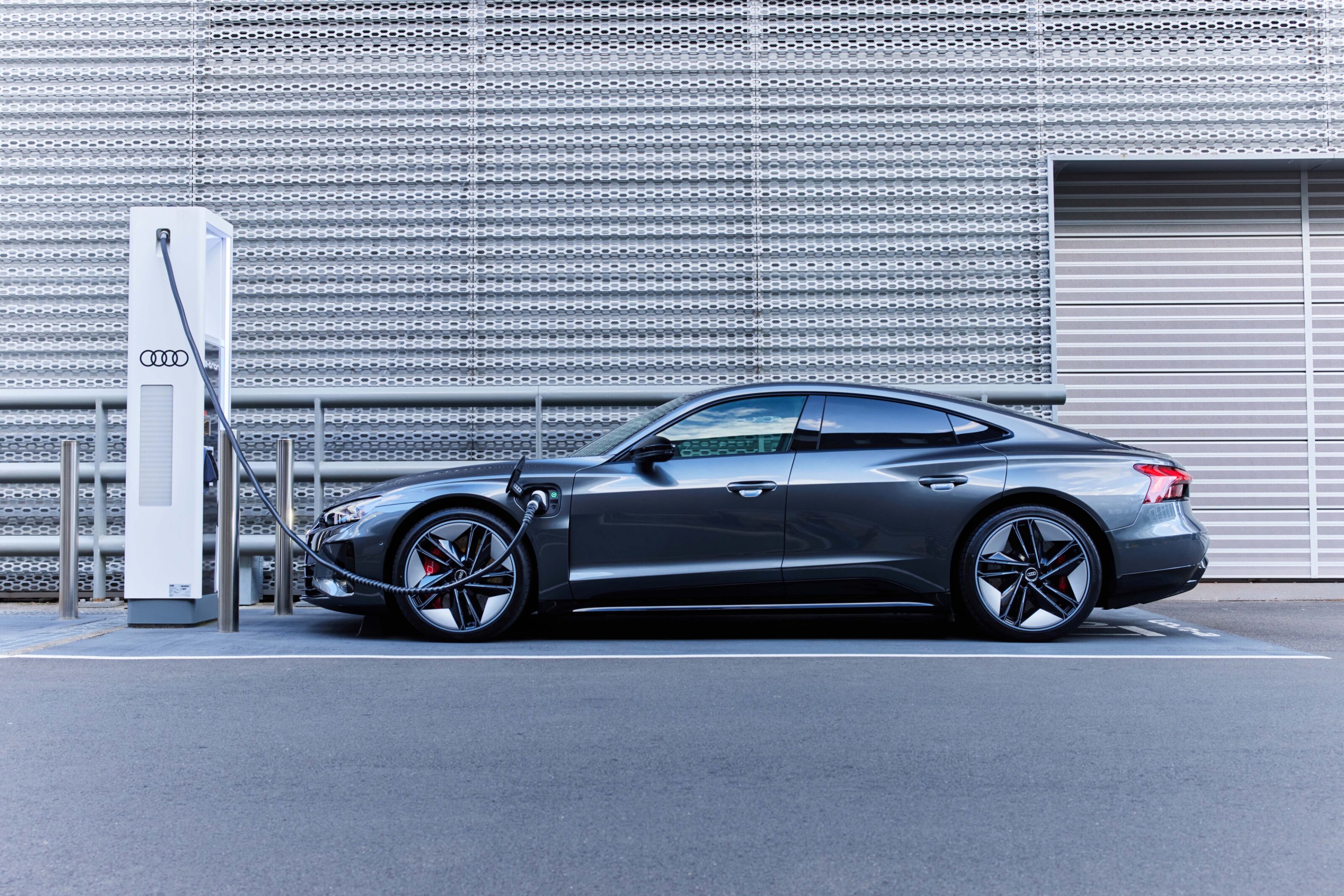
VERDICT
There’s a lot to like about Audi’s fresh electric flagship. It’s ferociously fast, stunning to look at, and genuinely comfortable. Thanks to its conventional cabin and deft chassis tuning, it also delivers an experience than feels more like a svelte and silent RS7 than a rebadged Taycan.
In fact, Audi has done a remarkable job of taking the same ingredients as the Taycan and turning out a super sedan that doesn’t only offer the customer something different but one that also feels like a proper Audi.
Should you buy one over a Porsche Taycan? Well, like most things in life, the answer is “that depends”. The E-Tron GT is marginally more comfortable, has a longer warranty and thanks to the inclusion of six years’ free servicing, charging and roadside assistance, its value equation is also a touch sweeter.
Is it better than a Taycan? No, it’s just different. And that just might be its biggest strength.
| Audi E-Tron GT | Audi RS E-Tron GT | |
|---|---|---|
| Price | $180,200 + on-road costs | $248,200 + on-road costs |
| Body | 5-door, 5-seat large sedan | 5-door, 5-seat large sedan |
| Drive | all-wheel | all-wheel |
| Drivetrain | 2 x electric motors + 93kWh (gross) lithium-ion battery | 2 x electric motors + 93kWh (gross) lithium-ion battery |
| Power | 350kW (390kW in boost mode) | 440kW (475kW in boost mode) |
| Torque | 630Nm (640Nm in boost mode) | 830Nm |
| Transmission | 2-speed automatic | 2-speed automatic |
| Consumption | 19.2kWh/100km | 20.2kWh/100km |
| Kerb weight | 2275kg | 2345kg |
| Towing capacity | n/a | n/a |
| 0-100 | 4.1sec (claimed in boost mode) | 3.3sec (claimed in boost mode) |
| L/W/H/W-B | 4989/1964/1396/2900mm | 4989/1964/1414/2900mm |
| Boot space | 405L boot + 81L frunk | 350L boot + 81L frunk |
| Warranty | 5yr/unlimited km | 5yr/unlimited km |
| Safety rating | not yet crash tested | not yet crash tested |
Score breakdown
Things we like
- Handsome design + potent performance
- Superb ride comfort
- Greater GT focus than closely related Porsche Taycan
- Free servicing, charging and roadside assist for six years
Not so much
- Annoying drive mode select button
- Hardcore RS variant misses the ‘GT’ brief a little
- Rear visibility not great; limited cabin storage
- No rear-drive or wagon variant planned. Boo.
We recommend
-
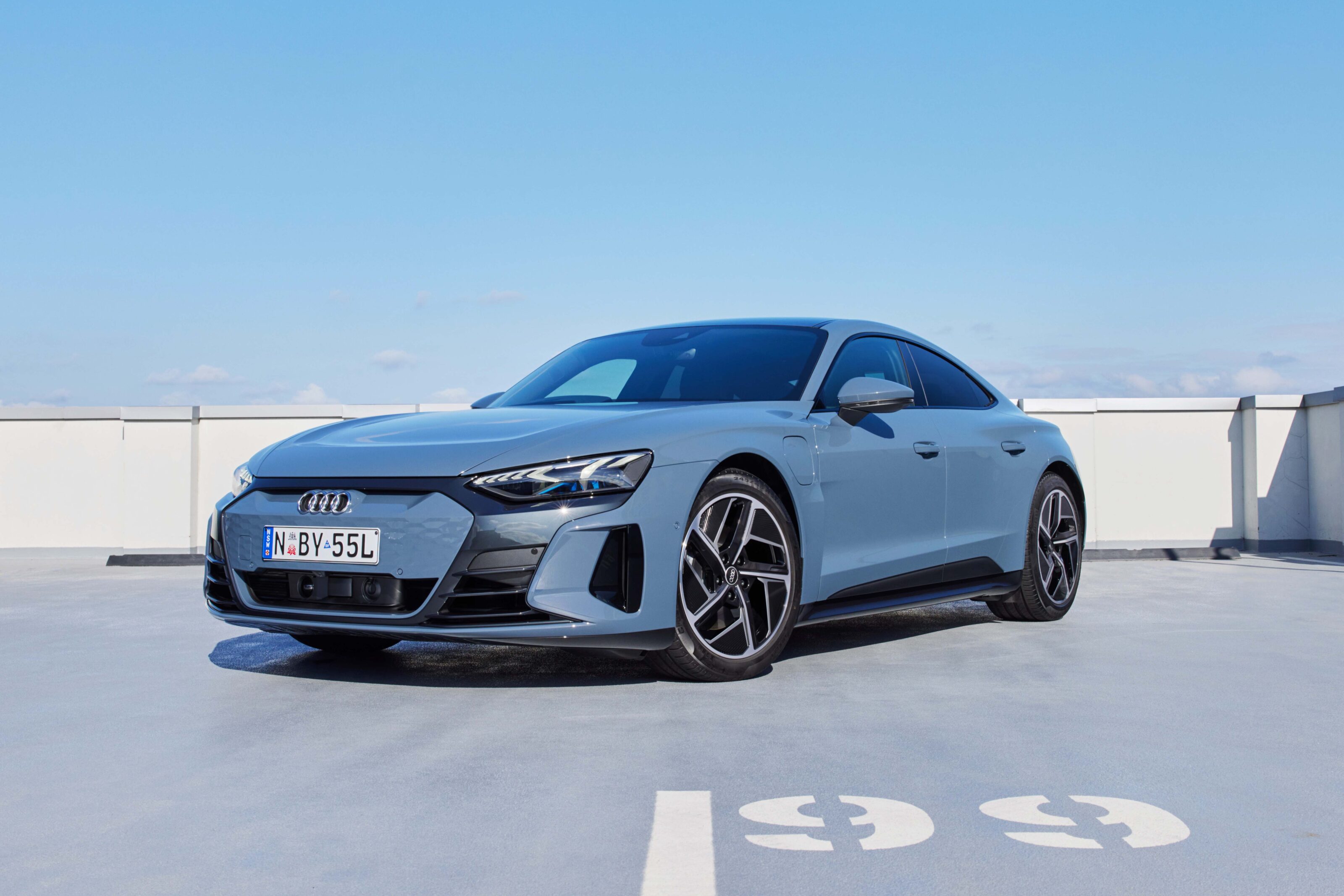 News
News2022 Audi E-Tron GT, RS E-Tron GT pricing and features
The E-Tron GT range is due to arrive on our shores later this year
-
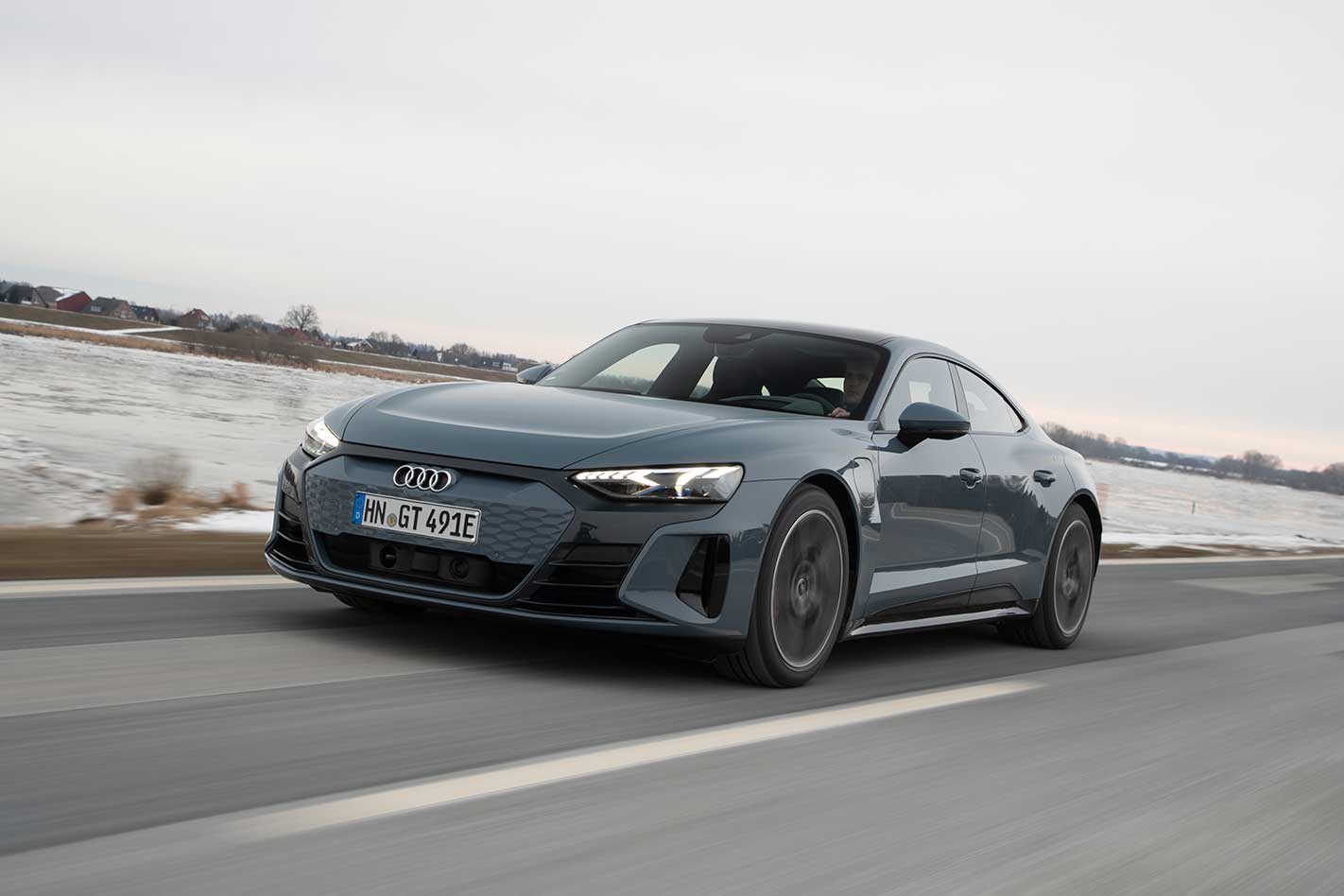 Reviews
Reviews2021 Audi e-Tron GT review
Sister car to the Taycan favours comfort over speed
-
 News
News2025 New Car Calendar: All the new cars coming to Australia
Take a look at our list of what is expected to launch in Australia in 2025 – plus those we might not see locally just yet


